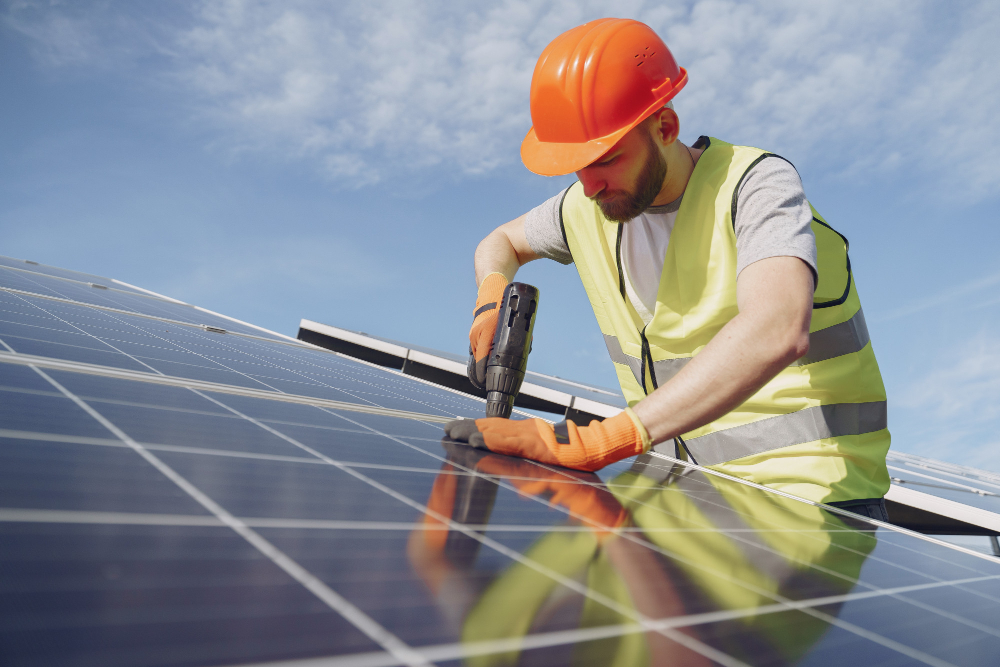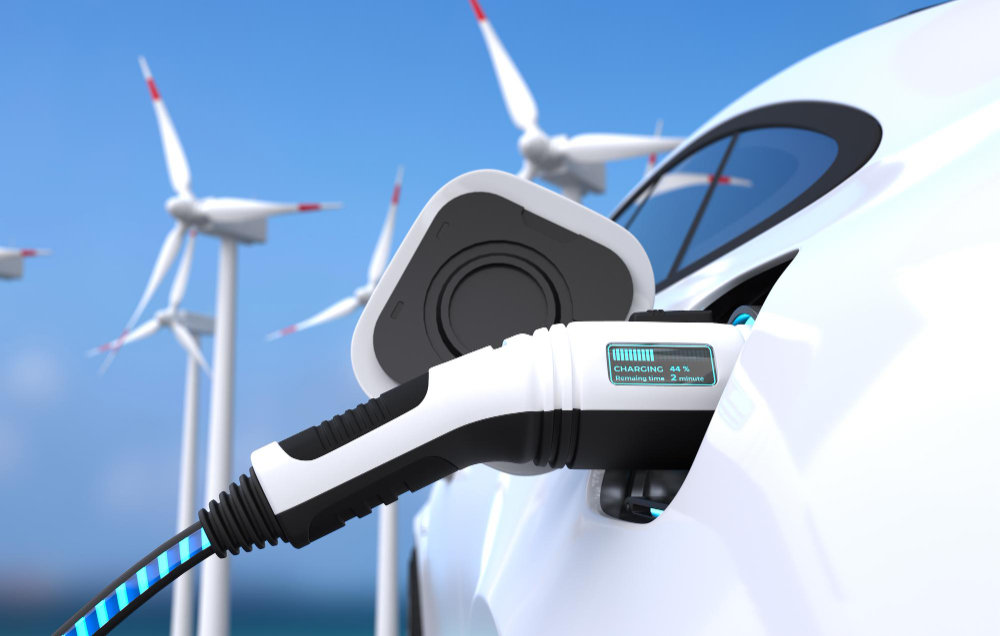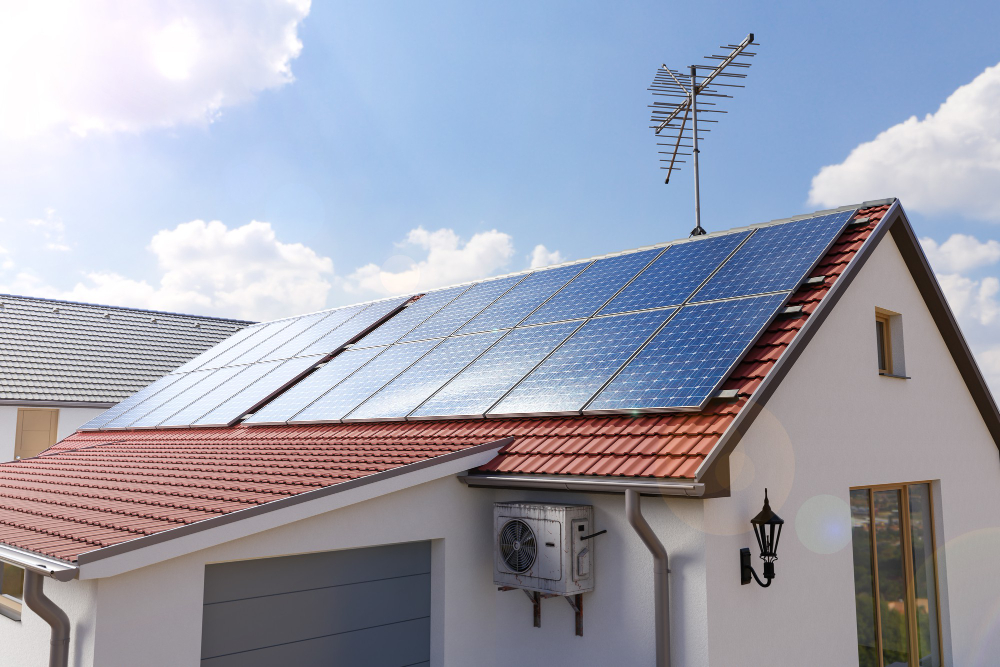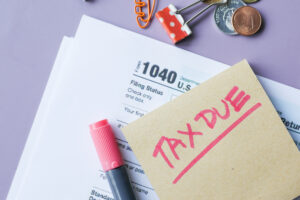The Inflation Reduction Act became law on August 16, 2022 and included many new tax provisions. This article highlights the provisions and refundable credits that impact individual taxpayers.
Tax Provisions included in the Inflation Reduction Act
Tax Provisions that Take Effect in 2022
The following tax credits from the Inflation Reduction Act go into effect for Tax Year 2022:
Nonbusiness Energy Property Credit

This credit was renamed in the Inflation Reduction Act of 2022 and is now called the Energy Efficient Home Improvement Credit. The credit was extended to cover years 2022 – 2032.
For 2022, the old rules and limits that applied under the Nonbusiness Energy Property Credit apply as follows:
- The credit rate is 10% of the total qualifying costs for the year.
- The lifetime limit of $500 for the credit applies. This covers all qualifying expenditures for years 2006 – 2022.
- As part of the total lifetime limit, there is a $200 limit for windows.
- For 2022, there is total cost limit for each of the following:
- $50 for any main air circulating fan
- $150 for any natural gas, propane, or oil furnace or hot water boiler
- $300 for any other item of energy efficient building property.
- Credit is only allowed for the taxpayer’s main home.
For more details, see the 2022 Form 5695 (Residential Energy Credits) instructions.
Alternative Fuel Vehicle Refueling Property Credit
- Taxpayers are eligible for a credit of up to $1,000 for residences and $30,000 for businesses for the cost of any qualified alternative fuel vehicle refueling property installed by a business or at a taxpayer’s residence for tax years 2022 – 2032.
- The credit is the lesser of 30% of the costs or $30,000 for businesses or $1,000 for residences.
- Qualifying property will now include bidirectional charging equipment and the credit can be claimed for electric charging stations for two- and three-wheeled vehicles that are intended for use on public roads.
- Beginning in 2023, charging or refueling property will only be eligible if it is placed in service within a low-income or rural census tract.
Plug-In Electric Drive Vehicle Credit 2022
For the existing Plug-in Electric Drive Vehicle Credit, a qualifying electric vehicle that was purchased after August 16, 2022, must have had its final assembly done in North America.
Also, keep in mind that an electric vehicle purchased in 2022 (even those purchased after August 16, 2022) must comply with the rules in effect before the enactment of the Inflation Reduction Act for the electronic vehicle credit to apply.
Tax Provisions that Take Effect in 2023
The following tax credits from the Inflation Reduction Act go into effect beginning in Tax Year 2023:
Energy Efficient Home Improvement Credit (Formerly the Nonbusiness Energy Property Credit)
Previously known as Nonbusiness Energy Property Credit, the credit has been renamed as the Energy Efficient Home Improvement Credit under the Inflation Reduction Act of 2022. The credit was extended to cover years 2022 – 2032.
For 2022 – 2032, the following new rules and limits go into effect as follows:
- The credit rate is increased to 30% with an annual limit of $1,200 per taxpayer ($2,000 for heat pumps and biomass stoves).
- Replaces lifetime cap on credits with a $1,200 annual credit limit, including $600 for windows, $500 for doors and $600 for each item of other qualified energy property. Increases limit to $2,000 for heat pumps and biomass stoves. Removes eligibility on roofs.
- Credit is available for residential solar, wind, geothermal, and biomass fuel property.
- Allows a 30% credit (up to $150) for home energy audits.
- Credit is allowed on any dwelling owned by the taxpayer.
For more details, see the IRS FAQs about energy efficient home improvements and residential clean energy property credit on the IRS website.
Premium Tax Credit
The Inflation Reduction Act expanded eligibility provisions that were expiring at the end of 2022 have been extended to 2023 – 2025. These provisions are:
- The phase-out for households with annual incomes above 400% of the federal poverty level is eliminated.
- The credit is increased by reducing the percentage of annual income that eligible households are required to contribute toward health insurance premiums.
Clean Vehicle Credit

- Taxpayers who purchase a qualifying clean vehicle are eligible for up to a $7,500 nonrefundable credit for years 2023 – 2032. The credit is broken down into two parts:
- $3,750 for meeting the critical minerals requirement – The vehicle’s battery must contain a threshold percentage of critical minerals that were extracted or processed in a country with which the US has a free trade agreement or recycled in North America as follows:
- 40% – 2023
- 50% – 2024
- 60% – 2025
- 70% – 2026
- 80% – 2027 and later
- $3,750 for meeting the battery components requirement – To meet this requirement, the vehicle’s battery components must meet a percentage threshold for manufacturing or assembly in North America as follows:
- 2023: 50%
- 2024 and 2025: 60%
- 2026: 70%
- 2027: 80%
- 2028: 90%
- After 2028: 100%
- $3,750 for meeting the critical minerals requirement – The vehicle’s battery must contain a threshold percentage of critical minerals that were extracted or processed in a country with which the US has a free trade agreement or recycled in North America as follows:
- To be an eligible clean vehicle, the final assembly of the vehicle must have been in North America.
- Clean vehicles include plug-in electric vehicles with a battery capacity of at least 7 kilowatt hours and fuel cell vehicles.
- The credit would not be allowed if the taxpayer’s current or preceding year’s modified AGI exceeds $300,000 for MFJ, $225,000 for Head of Household, and $150,000 for all other filers.
- The credit would be allowed for vehicles that have manufacturer’s suggest retail price of no more than $80,000 for vans, SUVs, or pickup trucks and $55,000 for all other vehicles.
- Taxpayers would be allowed to claim this credit on one vehicle per year.
- The manufacturer quota is eliminated.
- Beginning in 2024, a vehicle will not qualify for the credit if any of the vehicle’s battery components were manufactured or assembled by a foreign entity of concern.
- Beginning in 2025, a vehicle will not qualify for the credit if the vehicle’s battery contains critical minerals that were extracted, processed, or recycled by a foreign entity of concern.
Credit for Previously Owned Clean Vehicles
- Credit is for taxpayers who purchase a used qualified clean vehicle for years 2023 – 2032.
- Credit is up to $4,000 and is limited to 30% of the vehicle’s purchase price.
- Credit is not allowed if taxpayer’s current or preceding year’s modified AGI is $150,000 for MFJ, $112,500 for Head of Household, and $75,000 for all other filers.
- Credit is allowed for vehicles with a sales price of $25,000 or less with a model year that is at least two years earlier than the calendar year in which the vehicle is sold.
- Credit can only be claimed for vehicles sold by a dealer and on the first transfer of a qualifying vehicle.
- Credit can only be claimed once every three years.
Commercial Clean Vehicle Credit
- Credit is for taxpayers who purchase qualified commercial clean vehicles for Tax Years 2023 – 2032.
- The credit is the lesser of:
- 15% of the vehicle’s cost (30% for vehicles not powered by a gasoline or diesel engine; or
- the incremental cost of the vehicle relative to a comparable vehicle
- Credit limit is $7,500 for vehicles weighing less than 14,000 pounds (Class 1 – 3) or $40,000 for vehicles 14,000 pounds or more (Class 4 and above).
- Eligible vehicles must have a battery capacity of not less than 15 kilowatt hours (7 kilowatts for vehicles weighing less than 14,000 pounds) and be charged by an external source of electricity.
- To be eligible, a vehicle must be made by a qualified manufacturer who has a written agreement with and provides periodic reports to Treasury.
Residential Energy Credit

In the Inflation Reduction Act, this credit was renamed the Residential Clean Energy Credit.
- Extends the credit through 2034 (was set to expire at end of 2023).
- Credit would increase to 30% through 2032 then decrease to 26% for 2033 and 22% for 2034.
- Qualified battery storage technology is now eligible for the credit.
- Credit is available for the purchase of solar electric property, solar water heating property, fuel cells, geothermal heat pump property, small wind energy property, and qualified biomass fuel property.
Energy Efficient Commercial Building Deduction
- The Section 179D deduction was modified for eligible property that is placed in service after December 31, 2022.
- The deduction increases the maximum deduction to $5.00 per square foot and will be subject to an annual inflation adjustment.
- The qualification threshold for property is a 25% energy cost savings, with a base deduction equal to 50 cents per square foot and a bonus depreciation deduction equal to $2.50 per square foot.
- The deduction increases on a sliding scale for each percentage point above 25% of energy cost savings. The increase is capped at a 50% reduction with a base deduction set at $1 per square foot and a bonus deduction equal to $5.00 per square foot.
CrossLink Professional Tax Software
CrossLink is the industry’s leading professional tax software solution for high-volume tax businesses. Built based on the needs of busy tax offices that specialize in providing their taxpayer clients with fast and accurate tax returns, CrossLink has been a trusted software solution since 1989. CrossLink’s in-depth tax calculations allow you to prepare the most complicated tax returns with confidence and ease.







